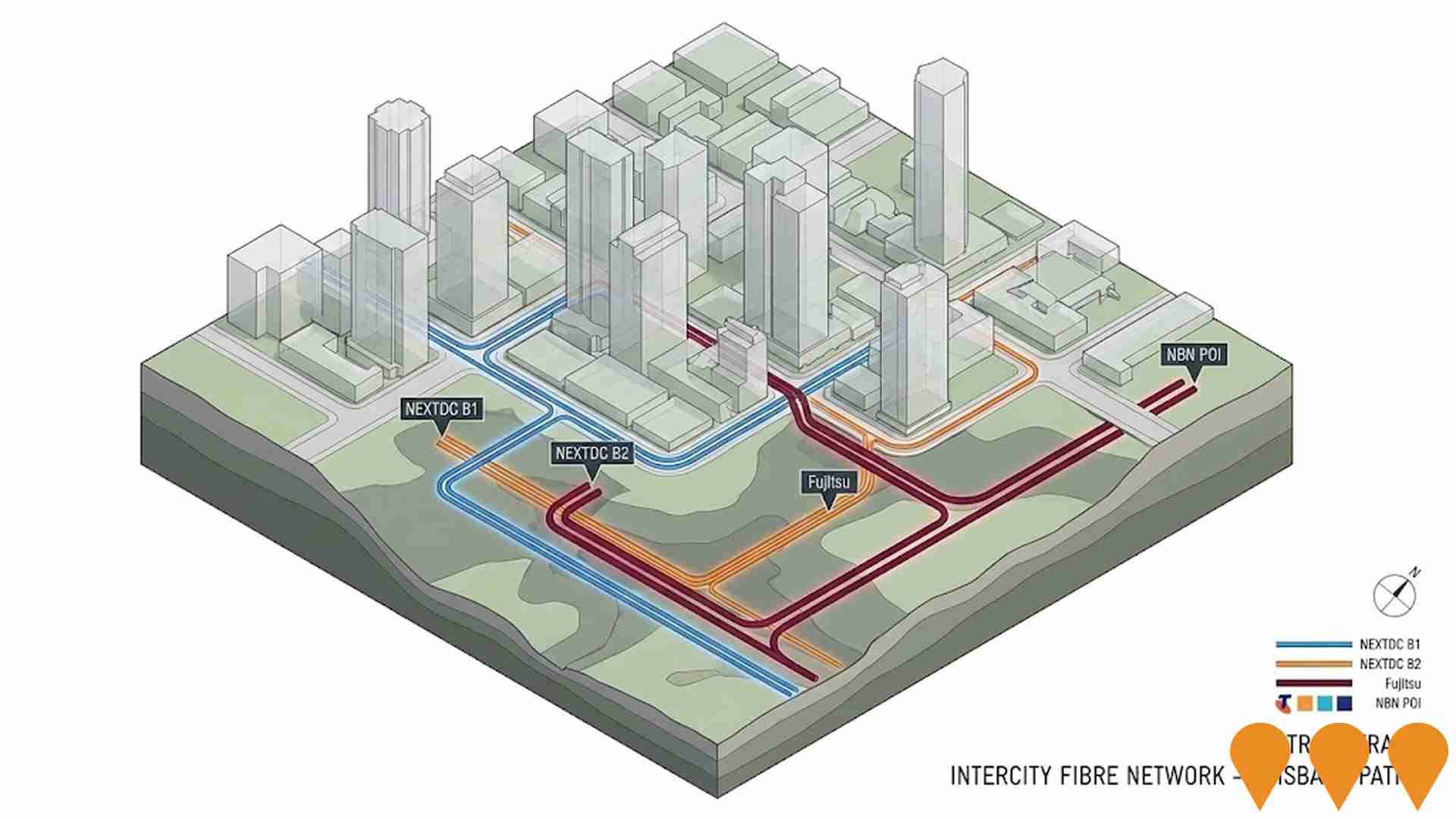Chart Color Schemes
est. as @ -- *
ABS ERP | -- people | --
2021 Census | -- people
Sales Activity
Curious about local property values? Filter the chart to assess the volume and appreciation (including resales) trends and regional comparisons, or scroll to the map below view this information at an individual property level.
Find a Recent Sale
Sales Detail
Population
Broulee - Tomakin lies within the top quartile of areas nationally for population growth performance according to AreaSearch analysis of recent, and medium to long-term trends
Based on AreaSearch's analysis, Broulee-Tomakin's population is around 3980 as of November 2025. This reflects an increase of 188 people (5.0%) since the 2021 Census, which reported a population of 3792 people. The change is inferred from the estimated resident population of 3932 from the ABS as of June 2024 and an additional 65 validated new addresses since the Census date. This level of population equates to a density ratio of 164 persons per square kilometer, providing significant space per person and potential room for further development. Broulee-Tomakin's growth of 5.0% since the 2021 census exceeded the SA3 area's growth of 2.6%, marking it as a growth leader in the region. Population growth was primarily driven by interstate migration, contributing approximately 74.0% of overall population gains during recent periods.
AreaSearch is adopting ABS/Geoscience Australia projections for each SA2 area, released in 2024 with 2022 as the base year. For areas not covered by this data, AreaSearch utilises NSW State Government's SA2 level projections, released in 2022 with 2021 as the base year. Growth rates by age group from these aggregations are applied to all areas for years 2032 to 2041. Examining future trends, a significant population increase is forecast for Broulee-Tomakin, expected to grow by 1249 persons to 2041 based on the latest numbers, reflecting an increase of 30.2% in total over the 17 years.
Frequently Asked Questions - Population
Development
Recent residential development output has been above average within Broulee - Tomakin when compared nationally
Broulee-Tomakin has recorded approximately 29 residential properties granted approval annually. Over the past five financial years, from FY-21 to FY-25, around 146 homes were approved and an additional 11 have been approved so far in FY-26. On average, about 2.4 people per year have moved to the area for each new home constructed during this period, indicating steady demand which supports property values.
The average expected construction cost value of these new homes is $361,000. This financial year has seen $2.4 million in commercial approvals, reflecting the area's predominantly residential nature. Compared to the Rest of NSW, Broulee-Tomakin has slightly higher development activity, with 36.0% more per person over the five-year period ending FY-25.
This maintains reasonable buyer options while sustaining existing property demand. However, development activity has moderated in recent periods. In terms of new building activity, 84.0% are standalone homes and 16.0% are townhouses or apartments, preserving the area's low-density nature with a focus on detached housing that attracts space-seeking buyers. The location currently has approximately 219 people per dwelling approval, indicating a low-density market. Looking ahead to 2041, Broulee-Tomakin is projected to grow by 1,201 residents. Building activity appears to be keeping pace with these growth projections, though increased competition among buyers can be expected as the population grows.
Frequently Asked Questions - Development
Infrastructure
Broulee - Tomakin has moderate levels of nearby infrastructure activity, ranking in the 48thth percentile nationally
Changes in local infrastructure significantly impact an area's performance. AreaSearch has identified one major project likely affecting this region. Notable projects include Future Rosedale, IRT Moruya Community-Integrated Seniors Housing, Moruya Bypass, and Princes Highway Safety And Capacity: Nowra NSW to Victorian Border. The following details those most relevant.
Professional plan users can use the search below to filter and access additional projects.
INFRASTRUCTURE SEARCH
 Denotes AI-based impression for illustrative purposes only, not to be taken as definitive under any circumstances. Please follow links and conduct other investigations from the project's source for actual imagery. Developers and project owners wishing us to use original imagery please Contact Us and we will do so.
Denotes AI-based impression for illustrative purposes only, not to be taken as definitive under any circumstances. Please follow links and conduct other investigations from the project's source for actual imagery. Developers and project owners wishing us to use original imagery please Contact Us and we will do so.
Frequently Asked Questions - Infrastructure
Low and Mid-Rise Housing Policy
State-wide NSW planning reforms via amendments to the State Environmental Planning Policy to enable more diverse low and mid-rise housing (dual occupancies, terraces, townhouses, manor houses and residential flat buildings up to 6 storeys) in well-located areas within 800 m of selected train, metro and light-rail stations and town centres. Stage 1 (dual occupancies in R2 zones statewide) commenced 1 July 2024. Stage 2 (mid-rise apartments, terraces and dual occupancies near stations) commenced 28 February 2025. Expected to facilitate up to 112,000 additional homes over the next five years.
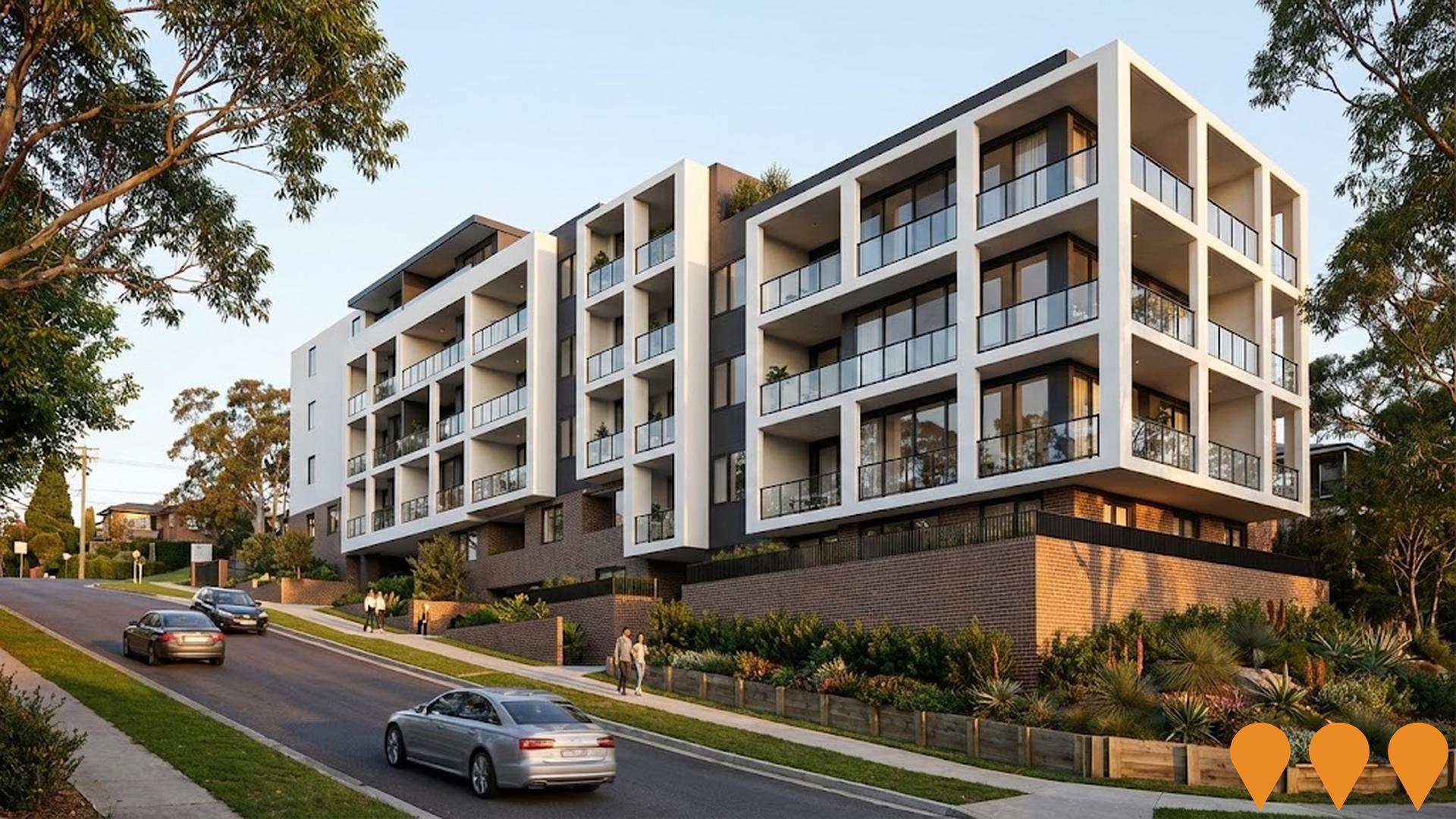
NSW Renewable Energy Zones (REZ) Program
NSW is delivering five Renewable Energy Zones (Central-West Orana, New England, South West, Hunter-Central Coast and Illawarra) to coordinate new wind and solar generation, storage and high-voltage transmission. The program is led by EnergyCo NSW under the Electricity Infrastructure Roadmap. Construction of the first REZ (Central-West Orana) transmission project commenced in June 2025, with staged energisation from 2028. Across the program, NSW targets at least 12 GW of new renewable generation and 2 GW of long-duration storage by 2030.
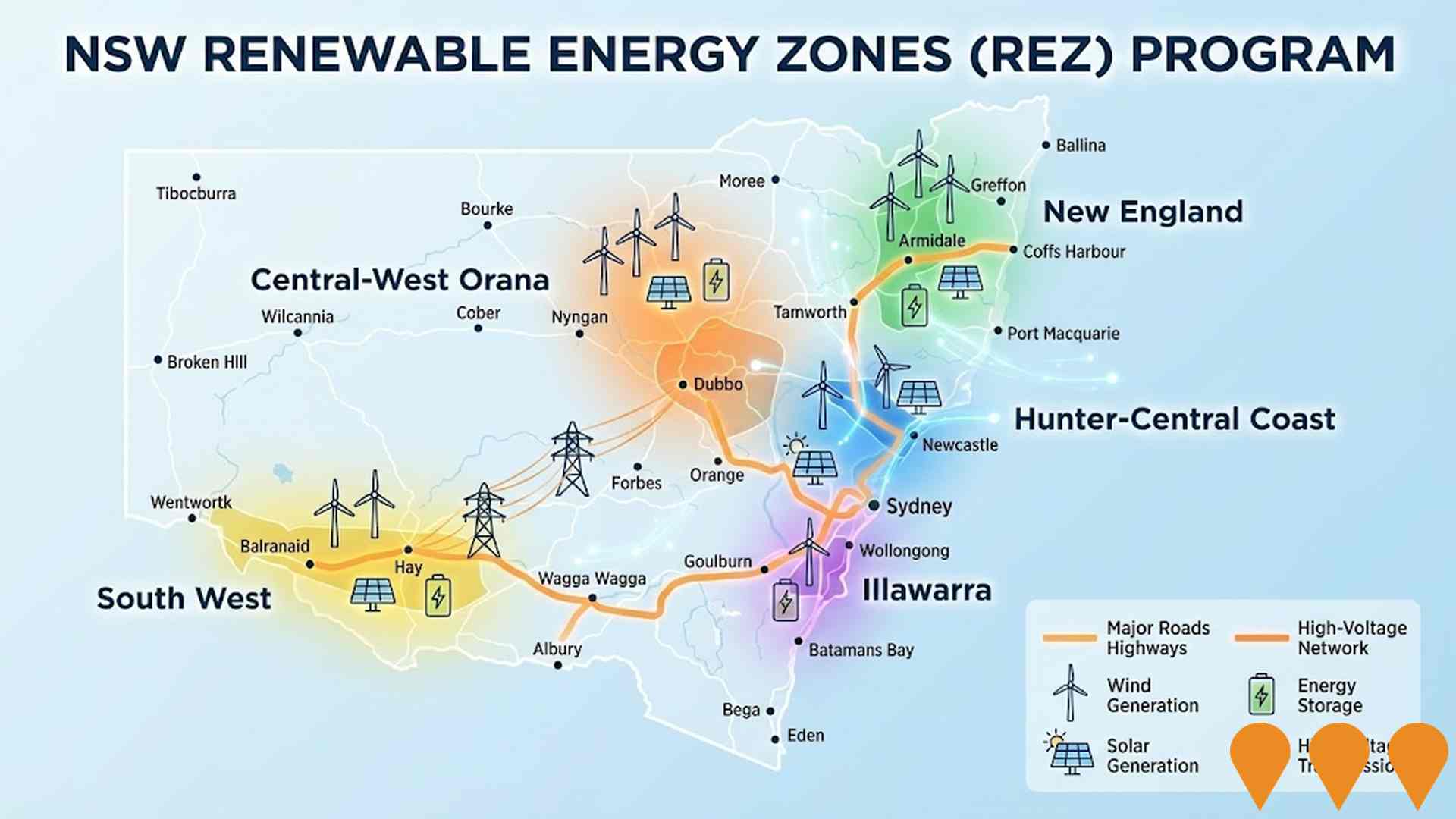
Bulk Water Supply Security
Nationwide program led by the National Water Grid Authority to improve bulk water security and reliability for non-potable and productive uses. Activities include strategic planning, science and business cases, and funding of state and territory projects such as storages, pipelines, dam upgrades, recycled water and efficiency upgrades to build drought resilience and support regional communities, industry and the environment.

IRT Moruya Community-Integrated Seniors Housing
A new community-integrated seniors housing development by IRT Group on an 18-hectare site in Moruya. The draft masterplan includes a mix of residential aged care, retirement living, and key worker accommodation across apartments and villas. The project will feature amenities like a hydrotherapy pool, library, cafe, and clubhouse, many of which are intended to be publicly accessible. The development is considered a State Significant Development and will be assessed by the NSW Department of Planning, Housing and Infrastructure. A finalized version of the plans is expected to be lodged later in 2025, with construction potentially starting in mid-2027 if approved. A development application has been lodged for this project with the application number SSD-81932463.
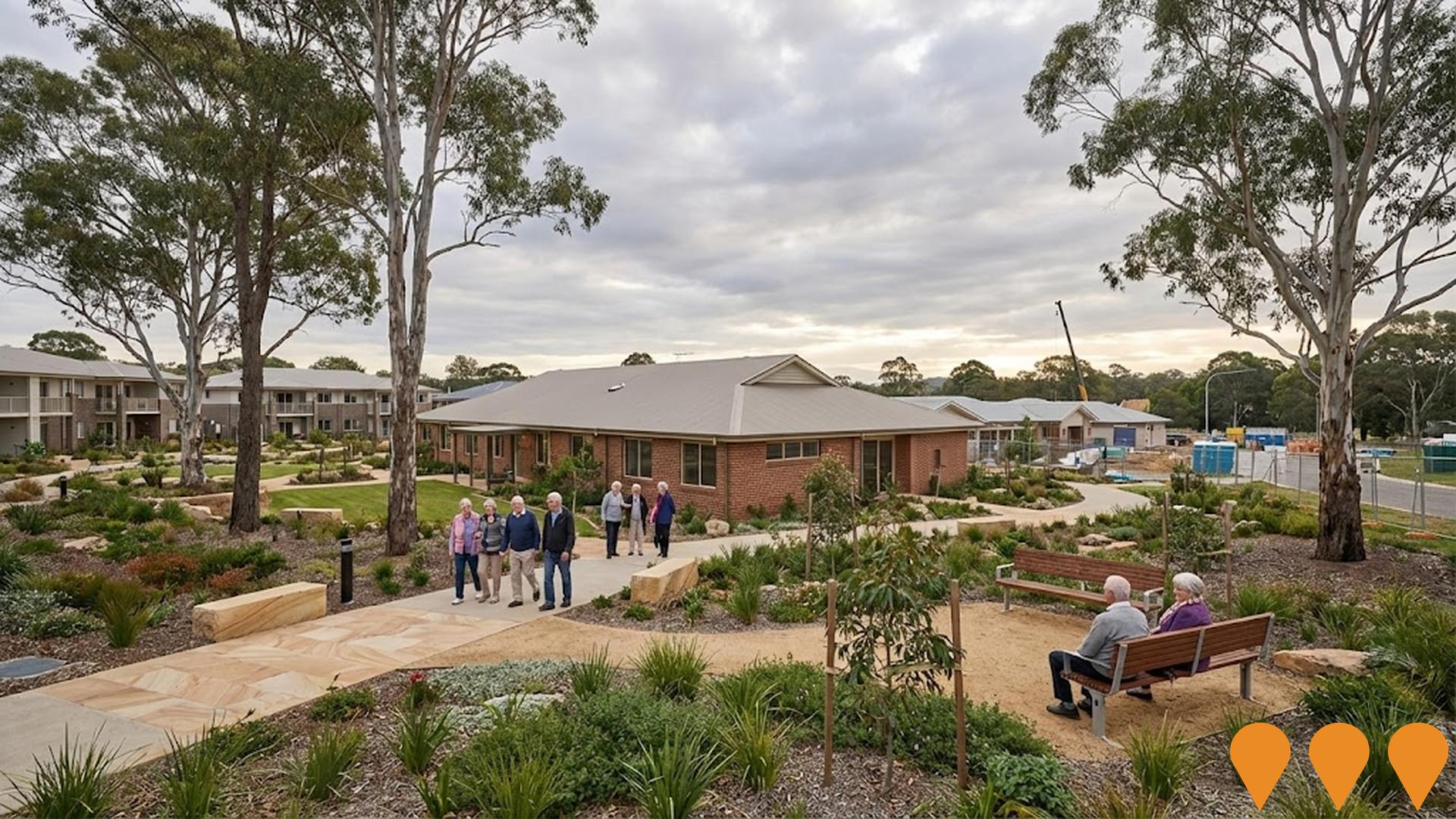
NSW Heavy Vehicle Rest Stops Program (TfNSW)
Statewide Transport for NSW program to increase and upgrade heavy vehicle rest stopping across NSW. Works include minor upgrades under the $11.9m Heavy Vehicle Rest Stop Minor Works Program (e.g. new green reflector sites and amenity/signage improvements), early works on new and upgraded formal rest areas in regional NSW, and planning and site confirmation for a major new dedicated rest area in Western Sydney. The program aims to reduce fatigue, improve safety and productivity on key freight routes, and respond to industry feedback collected since 2022.
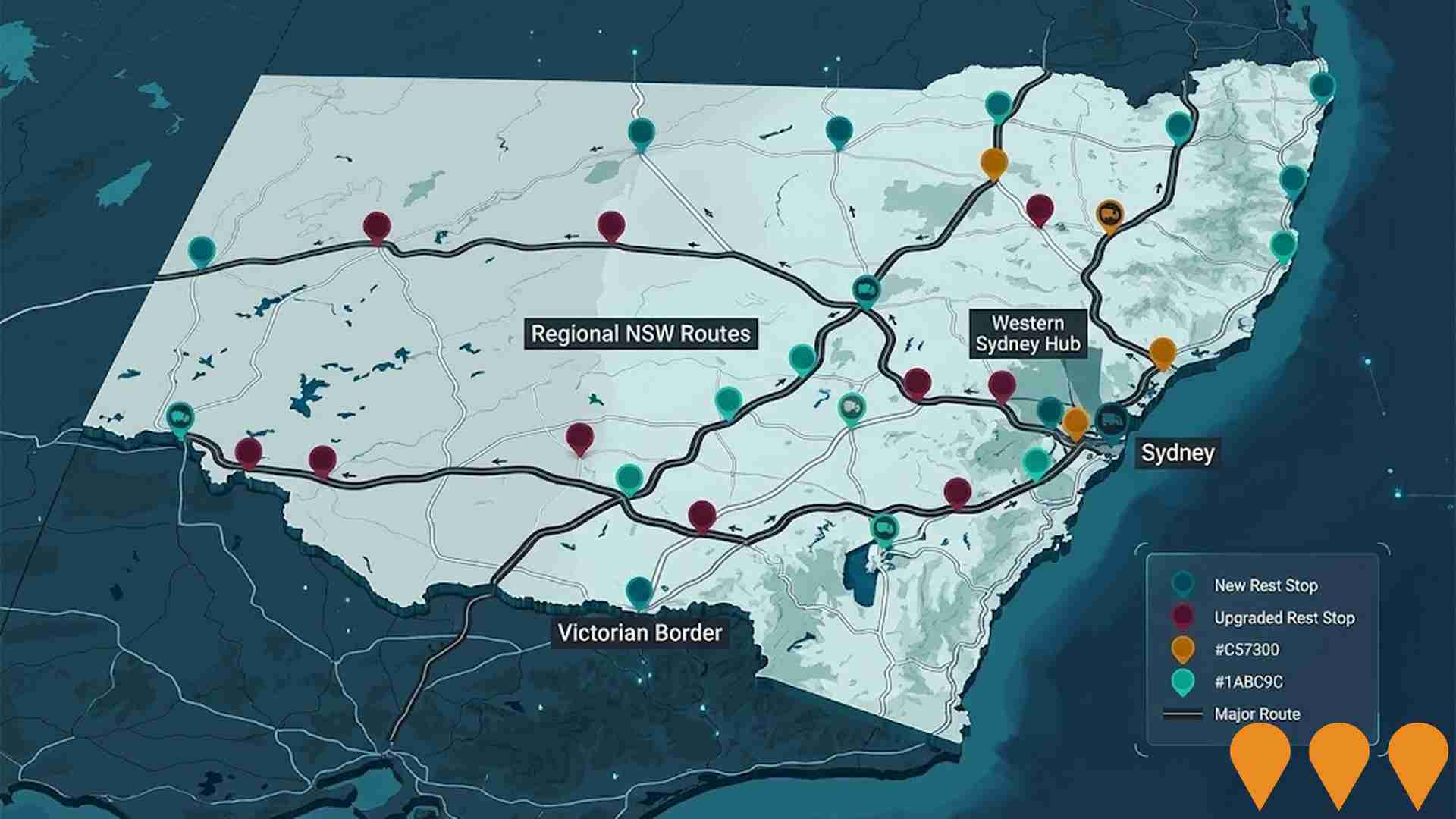
Future Rosedale
A masterplanned community featuring 741 residential lots, open space, and ecological lots. The project is focused on creating a coastal lifestyle with a strong emphasis on environmental conservation and community spaces.

Moruya Bypass
A proposed bypass of the Moruya town centre to improve traffic flow, safety and resilience on the Princes Highway. A preferred corridor has been identified and the land is being reserved for future construction.

Princes Highway Safety And Capacity: Nowra, Nsw To Victorian Border
Enhancing the Princes Highway from Nowra to the Victorian border to improve safety, reduce congestion, and increase freight productivity through upgrades and bypasses; $2.2 billion committed for various projects.

Employment
Employment performance in Broulee - Tomakin has been broadly consistent with national averages
Broulee - Tomakin has a skilled workforce with essential services sectors well represented. The unemployment rate in June 2025 was 2.4%.
There were 1,680 residents employed at this time, with an unemployment rate of 1.3% below the Rest of NSW's rate of 3.7%. Workforce participation lagged significantly at 49.4%, compared to Rest of NSW's 56.4%. Key industries of employment among residents were health care & social assistance, construction, and education & training. The area had particular employment specialization in construction, with an employment share of 1.7 times the regional level.
Manufacturing employed just 2.2% of local workers, below Rest of NSW's 5.8%. There appeared to be limited employment opportunities locally, as indicated by the count of Census working population vs resident population. From June 2024 to June 2025, the labour force decreased by 3.6%, while employment declined by 4.3%, causing unemployment to rise by 0.8 percentage points. In contrast, Rest of NSW saw employment contract by 0.1%, the labour force grow by 0.3%, and unemployment rise by 0.4 percentage points. Jobs and Skills Australia's national employment forecasts from May 2025 suggested potential future demand within Broulee - Tomakin. These projections estimated national employment growth of 6.6% over five years and 13.7% over ten years, with varying rates between industry sectors. Applying these industry-specific projections to Broulee - Tomakin's employment mix suggested local growth of approximately 6.9% over five years and 14.0% over ten years.
Frequently Asked Questions - Employment
Income
Income levels sit below national averages according to AreaSearch assessment
Broulee-Tomakin's median income among taxpayers was $49,048 and average income stood at $62,906 in financial year 2022. These figures compared to the Rest of NSW's median income of $49,459 and average income of $62,998 respectively. By September 2025, based on a Wage Price Index growth of 12.61%, estimated incomes would be approximately $55,233 (median) and $70,838 (average). According to the 2021 Census, household, family, and personal incomes in Broulee-Tomakin ranked modestly between the 27th and 36th percentiles. Income analysis revealed that 28.4% of residents (1,130 people) fell within the $800 - $1,499 bracket, unlike regional trends where 29.9% fell within the $1,500 - $2,999 range. Housing costs were manageable with 86.7% retained, but disposable income was below average at the 31st percentile and the area's SEIFA income ranking placed it in the fifth decile.
Frequently Asked Questions - Income
Housing
Broulee - Tomakin is characterized by a predominantly suburban housing profile, with above-average rates of outright home ownership
In Broulee-Tomakin, as recorded in the latest Census, houses accounted for 80.9% of dwellings, with other types such as semi-detached homes, apartments, and 'other' dwellings making up the remaining 19.1%. This differs slightly from Non-Metro NSW's composition of 84.3% houses and 15.7% other dwellings. Home ownership in Broulee-Tomakin stood at 52.2%, similar to Non-Metro NSW, with mortgaged properties at 27.5% and rented dwellings at 20.3%. The median monthly mortgage repayment was $1,733, higher than the Non-Metro NSW average of $1,517. Median weekly rent in Broulee-Tomakin was $360, compared to Non-Metro NSW's $320. Nationally, Broulee-Tomakin's mortgage repayments were lower than the Australian average of $1,863, and rents were less than the national figure of $375.
Frequently Asked Questions - Housing
Household Composition
Broulee - Tomakin has a typical household mix, with a higher-than-average median household size
Family households account for 68.6% of all households, including 22.7% couples with children, 35.5% couples without children, and 9.2% single parent families. Non-family households make up the remaining 31.4%, consisting of 29.2% lone person households and 2.2% group households. The median household size is 2.3 people, which is larger than the Rest of NSW average of 2.2.
Frequently Asked Questions - Households
Local Schools & Education
Educational attainment in Broulee - Tomakin aligns closely with national averages, showing typical qualification patterns and performance metrics
The area's educational profile is notable regionally, with university qualification rates at 28.8% of residents aged 15+, surpassing the Rest of NSW average of 21.3% and the SA3 area rate of 21.5%. Bachelor degrees are most prevalent at 19.3%, followed by postgraduate qualifications (5.7%) and graduate diplomas (3.8%). Vocational credentials are also prominent, with 38.2% of residents aged 15+ holding such qualifications – advanced diplomas comprise 11.6% and certificates make up 26.6%.
Educational participation is high, with 25.3% of residents currently enrolled in formal education, including 9.4% in primary, 8.0% in secondary, and 3.0% pursuing tertiary education. Broulee-Tomakin has three schools with a combined enrollment of 1,636 students, operating under typical Australian school conditions (ICSEA: 1016) and offering balanced educational opportunities. The area functions as an education hub with 41.2 school places per 100 residents, significantly higher than the regional average of 12.7, attracting students from surrounding communities.
Frequently Asked Questions - Education
Schools Detail
Nearby Services & Amenities
Transport
Transport servicing is moderate compared to other areas nationally based on assessment of service frequency, route connectivity and accessibility
Transport analysis indicates 90 active stops operating within Broulee-Tomakin. These are served by a mix of buses along 29 individual routes, offering 323 weekly passenger trips collectively. Transport accessibility is rated excellent, with residents typically located 171 meters from the nearest stop.
Service frequency averages 46 trips per day across all routes, equating to approximately 3 weekly trips per stop.
Frequently Asked Questions - Transport
Transport Stops Detail
Health
Health performance in Broulee - Tomakin is well below average with prevalence of common health conditions notable across both younger and older age cohorts
Health data indicates significant challenges for Broulee - Tomakin, with high prevalence of common health conditions among both younger and older age groups. Private health cover is present in approximately 51% of the total population (~2,033 people), slightly lower than the average SA2 area's 47.0%.
The most frequent medical conditions are arthritis (13.0%) and mental health issues (8.1%). Conversely, 60.9% report no medical ailments, compared to Rest of NSW's 59.6%. The area has a higher proportion of residents aged 65 and over at 31.1% (1,238 people).
Frequently Asked Questions - Health
Cultural Diversity
Broulee - Tomakin is considerably less culturally diverse than average when assessed alongside AreaSearch's national rankings for language and cultural background related metrics
Broulee-Tomakin was found to have below average cultural diversity, with 87.0% of its population born in Australia, 92.7% being citizens, and 97.2% speaking English only at home. Christianity is the predominant religion in Broulee-Tomakin, comprising 47.8% of people. Judaism, however, shows an overrepresentation with 0.1% compared to the Rest of NSW's 0.1%.
The top three ancestry groups are English (32.5%), Australian (29.6%), and Irish (12.0%). Notably, Dutch ethnicity is overrepresented at 1.7%, Scottish at 8.8%, and Welsh at 0.6% compared to regional averages of 1.4%, 8.6%, and 0.5% respectively.
Frequently Asked Questions - Diversity
Age
Broulee - Tomakin ranks among the oldest 10% of areas nationwide
The median age in Broulee-Tomakin is 52 years, which is significantly higher than Rest of NSW's average of 43 and well above the national norm of 38. The 65-74 age group is notably over-represented at 17.5% locally, compared to the Rest of NSW average, while the 25-34 age group is under-represented at 8.2%. This concentration of the 65-74 cohort is well above the national average of 9.4%. Between 2021 and present, the 15-24 age group has grown from 8.3% to 10.0% of the population. Conversely, the 45-54 age group has declined from 11.9% to 10.2%, and the 55-64 age group has dropped from 16.1% to 15.1%. Population forecasts for 2041 indicate substantial demographic changes in Broulee-Tomakin, with the 75-84 cohort projected to grow by 70%, adding 257 residents to reach 624. Meanwhile, the 55-64 age group is projected to grow by a modest 6% (35 people).
